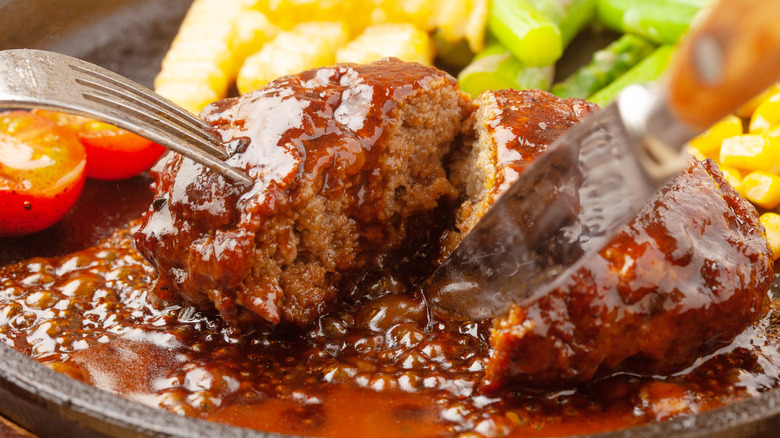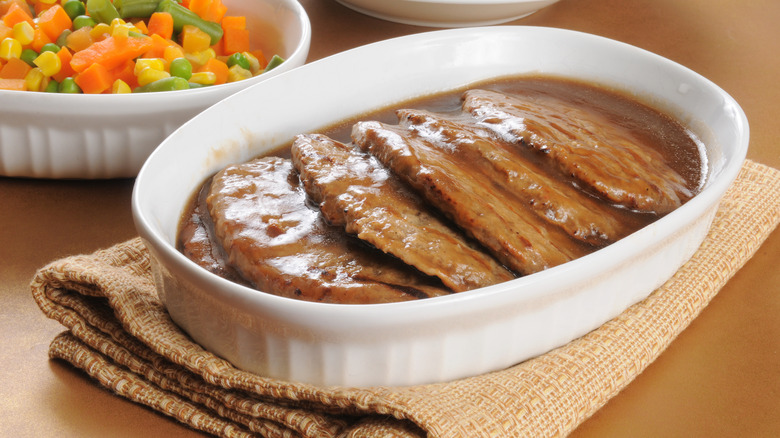Salisbury Steak's Historic Connection To The Civil War
In the preface to his landmark diet book, "The Relation of Alimentation and Diseases," published in 1888, Dr. James H. Salisbury relays that his interest in germ theory began as early as 1849. That would have been when he was still studying for his medical degree at Albany Medical College in New York, which he received in 1850, per Exploring Upstate. As a result of these studies and his microscopic and chemical analysis of the human body, Dr. Salisbury became convinced that our health — for good or for ill — is inextricably linked with the foods we eat. While it seems obvious now, at the time, Dr. Salisbury was a pioneer in the field.
By 1854, according to his book, Dr. Salisbury became obsessed with diets consisting of a single food. The most famous example of this obsession involved an experiment in which he ate only baked beans for three days with predictable results. "I became very flatulent and constipated, head dizzy, ears ringing, limbs prickly, and was wholly unfitted for mental work," he noted.
These experiments, unusual as they were, ultimately led to the invention of the steak that now bears his name, and his use of it as a single-food preventative (with the occasional complement of broiled mutton) for dysentery and chronic diarrhea during the American Civil War. (via Smithsonian Magazine)
The Salisbury steak's history with soldiers
Disease killed more men during the American Civil War than combat, accounting for more than half the 600,000 fatalities during the conflict. Dysentery and its accompanying diarrhea alone were responsible for an estimated 100,000 deaths, reports HistoryNet. Poor diet was one of the causes of this, per Smithsonian Magazine, and Dr. Salisbury, by this time a physician for the Union Army, believed he had a solution. His prescription was lean minced beef formed into patties, which he gave to soldiers to improve their nutrition and digestion.
Dr. Salisbury's description of his steak is a rather unappetizing one: "muscle pulp of beef." (via Smithsonian Magazine) Over time, its actual makeup would be codified by the U.S. Department of Agriculture, which notes in its Food Standards and Labeling Policy Book that Salisbury steak must be at least 65% chopped meat, of which no more than 25% of that may be pork. The rest should be beef, with no more than 30% fat allowed in total. Liquids such as milk and cream may also be used, undoubtedly in the brown gravy.
The chopped beef patties in Salisbury steak were closely related to hamburgers, of course, but it took another war to promote the differences. During World War I, anti-German sentiment led the U.S. Army to eschew hamburgers in favor of the Salisbury steak, which it served to troops, according to the William G. Pomeroy Foundation.

